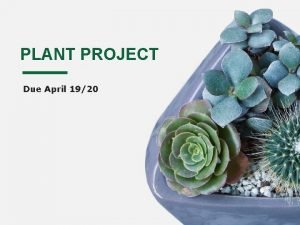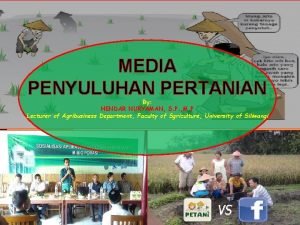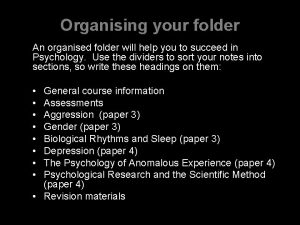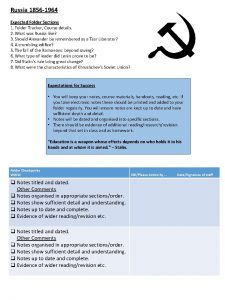Warm up In your science folder create a


















- Slides: 18

Warm up: In your science folder create a page called ecology notes. Answer the questions on this slide show on that page. Do it by yourself first, when your group is finished talk in your groups to see if you agree. Then as a class we will discuss the answers. Hermon Science Rules!

What’s Living? What’s Non-Living? List the abiotic and biotic factors in this picture.

Draw a chart like this one to show the parts. Biotic Abiotic

What is Ecology? Ecology - the study of the interactions of organisms with one another and with their environment. Ecologist – a scientist who studies ecology

Two Parts of an Ecosystem Biotic factors ◦ The living parts of an ecosystem Ex. : plants, animals, fungi, bacteria ◦ Bio = living; life Abiotic factors ◦ The nonliving parts of an ecosystem Ex: water, sunlight, oxygen, temperature, soil ◦ A = non; not; without ◦ Bio = living; life

What are the biotic parts of this environment? The abiotic parts?

Graphic Organizer

Organism Single living thing

Population A group of individuals of the same species that live together.

Community All the different populations of species that live together in an area –or. All of the living things (biotic factors) in an area

Find examples of each level of ecological organization:

Ecosystems Made up of all the living and nonliving things (biotic and abiotic factors) that interact in a particular area ◦ Examples: prairie, mountain stream, ocean, forest

Ecosystems, Habitats & Niches In an ecosystem, organisms live in a habitat. ◦ Habitat provides food, water & shelter ◦ A single ecosystem may contain many habitats. Within an ecosystem, organisms fit into a niche. ◦ Role or job within the ecosystem

Biome A large region with a similar climate, and specific plant and animal communities based on that climate Terrestrial (Land) Aquatic (Water) Tropical rainforest Marine (oceans) Savanna/Grassland Freshwater (rivers & lakes) Temperate Forest Estuary Desert Taiga Tundra Mountain

Biosphere The part of Earth where life exists ◦ The biosphere includes the top portion of Earth’s crust, all the waters that cover Earth’s surface, and the atmosphere that surrounds Earth.

Ecological Organization

How is it all tied together?

Summary ◦ Add illustrations to your graphic organizer. Should be based on one of the biomes: Terrestrial (Land) Aquatic (Water) Tropical rainforest Marine (oceans) Savanna/Grassland Freshwater (rivers & lakes) Temperate Forest Estuary Desert Taiga Tundra Mountain
 Narrow chin
Narrow chin Apa itu mutiple queue dan one way list
Apa itu mutiple queue dan one way list What's your favorite subject at school
What's your favorite subject at school Apache tomcat servlet container
Apache tomcat servlet container Pterophyta examples
Pterophyta examples Dasar pertimbangan pemilihan media penyuluhan pertanian
Dasar pertimbangan pemilihan media penyuluhan pertanian Omega folder gluer
Omega folder gluer Folder informatyka
Folder informatyka Medii.xls reprezinta un fisier sau un folder
Medii.xls reprezinta un fisier sau un folder Medii.xls reprezinta un fisier sau un folder
Medii.xls reprezinta un fisier sau un folder Braille folder
Braille folder Gpo co to
Gpo co to Stroetmann folder
Stroetmann folder Small pictures that represent files folders and programs
Small pictures that represent files folders and programs Screen hungary kft
Screen hungary kft Clean architecture folder structure
Clean architecture folder structure Fungsi manajemen explore
Fungsi manajemen explore Pocket folder with brads
Pocket folder with brads Boee substitute authorization
Boee substitute authorization



































